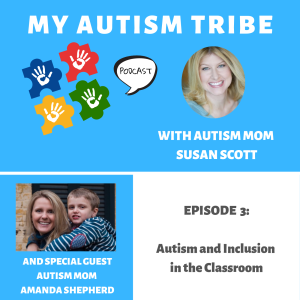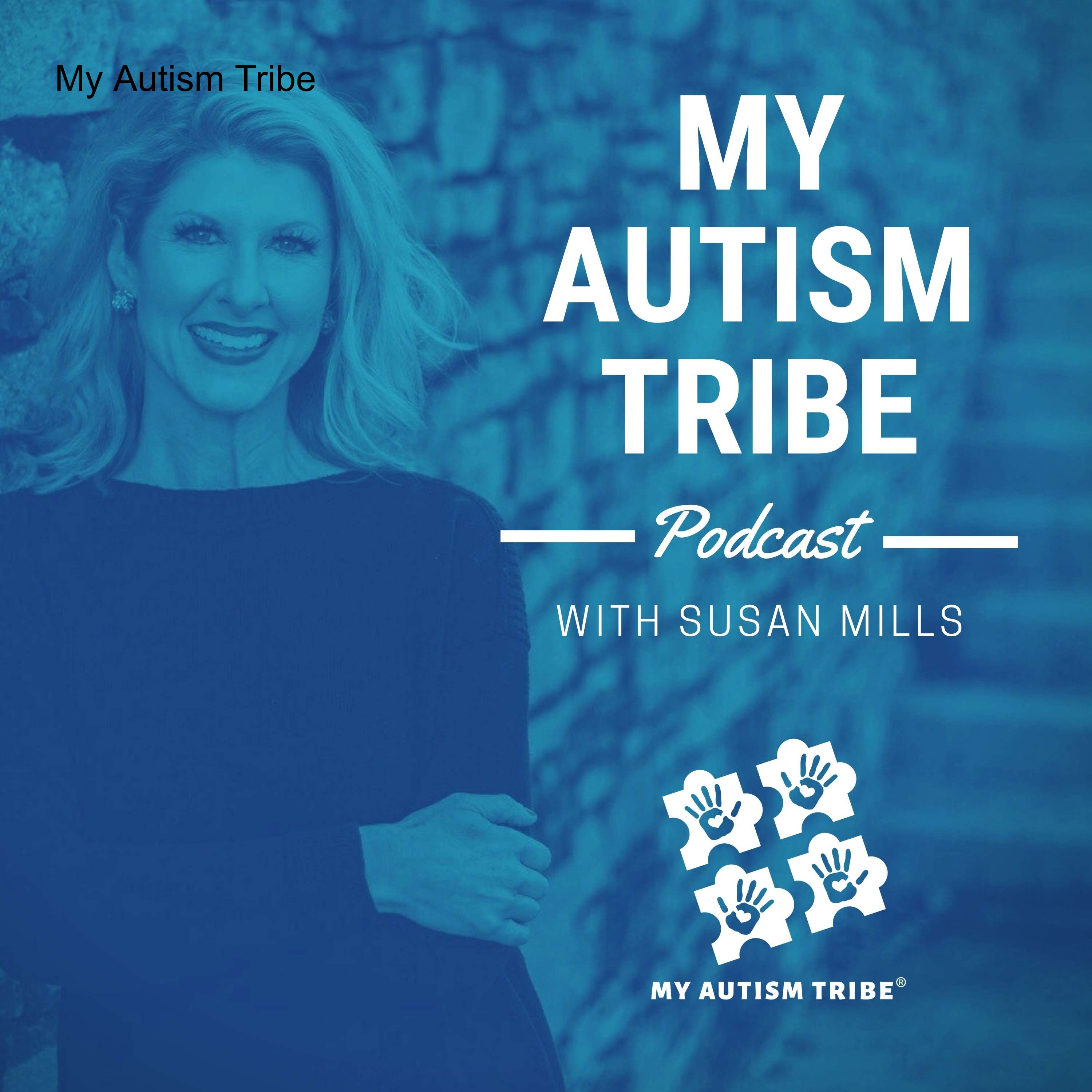Episodes

Friday Feb 01, 2019
Autism and Inclusion in the Classroom
Friday Feb 01, 2019
Friday Feb 01, 2019
EPISODE 3:
Many autism families struggle with making the choice on inclusion in the school classroom. Is inclusion the right choice for your autistic child? Some children will really thrive in an inclusive setting, but inclusion may not always be the best choice. Inclusion may also work well for a period of time, but then become more difficult as the child grows older. Perhaps a child needing a specialized autism support classroom when they’re young, may mature to the point where inclusion is a great option.
In today’s episode, we’re speaking with educator Amanda Shepherd. She just so happens to also be an autism mom. Amanda has professional (and personal) experience surrounding the inclusion, school choice, therapy, and IEP topics. She’s really excited to come along side to support and help others in their journeys as well.
QUESTIONS ABOUT YOUR CHILD AND YOUR SCHOOL DISTRICT THAT SHOULD HELP YOU FIND THE ANSWERS THAT YOU NEED:
School Related Questions
Every school district has a different level of commitment to and support for inclusion. In addition, different districts have different ideas about what inclusion looks like and for whom it is most appropriate. With that in mind, it's helpful to do the research required to answer these questions about your particular district and school.
- What kinds of support does your school district offer to ensure success in an inclusive setting? Your district will not provide you with a "menu" of autism support options because, in theory, every child's program is developed for that child's unique needs. The reality, however, is that most schools have a limited list of options which might (or might not) include teacher training, inclusion support staff, resource rooms, aides, therapists, and so forth; if your child's needs don't fit their offerings it can be tough to make inclusion work. To find out what's really available, visit the schools and ask probing questions of administrators, teachers, and other parents.
- How flexible is the district relative to different learning styles and behavioral issues? In some districts, teachers have a fair amount of creative license and may use technologies or other tools to help kids with different learning styles to understand what's being taught. In other districts, teaching is mainly lecture-style—an approach that's very tough for many kids with autism who have difficulty with following rapid spoken language. Some districts have flexibility regarding behavior: kids who need to get up, pace, rock, or flick their fingers are allowed to do so within reason. Other districts are very strict about unusual behaviors, which can make learning almost impossible for some autistic students.
- How well does the district work with parents? Other parents and your own observations will quickly tell you whether the district works with or against special needs parents. Obviously, it will be harder to work with a district that sees parents as the enemy!
Student Related Questions
Even if your district has a wide range of supports and resources for their students with special needs, your individual child might not be right for inclusion. Inclusive settings, particularly after grade two, tend to have 20+ children in a classroom with a single teacher. They often move from concept to concept quickly and may require children to respond instantly to teachers' questions or requests. Some children with autism (with or without support) can manage such settings; others find them extremely stressful. By answering these questions about your child, you'll have a better sense of whether inclusion is right for him or her.
- How does your child learn? Even the best general education classrooms rely largely on verbal instruction (particularly after grade two, when students must prep for standardized tests). If your child really can't process spoken or written language quickly, the general education classroom may be a poor match for his academic needs. Even with an aide, your child may wind up in the same space as typical learners, but otherwise completely segregated.
- Just how difficult are your child's behaviors? While you may be within your legal rights to insist that a child with really severe behavioral challenges be placed in an inclusive setting, such a setting may not make sense for your child or his classmates. Inclusion is intended to foster positive peer relationships and increase a child's chances of doing well in a typical setting; a child who screams, hits, or otherwise upsets his classmates and teacher is unlikely to gain those benefits. Your child may do better, at least for the time being, in a setting where behavior modification is a major part of the academic program.
- How does your child feel about the inclusive setting? Every child with autism is different. Some children thrive in an inclusive classroom but others feel ostracized or may even be bullied. Yes, those issues can be addressed in many cases, but for some youngsters, at least for some period of their lives, a more specialized classroom may be a better social fit.
CONCLUSION
The more you know about your district, your child, and your own tolerance for challenging school situations, the easier it will be for you to make a smart decision about your child's academic setting. Bear in mind that everything you decide today may change, as a new superintendent, new teachers, new classmates, or your child's new skills make inclusion more or less desirable.
References: https://www.verywellhealth.com


No comments yet. Be the first to say something!